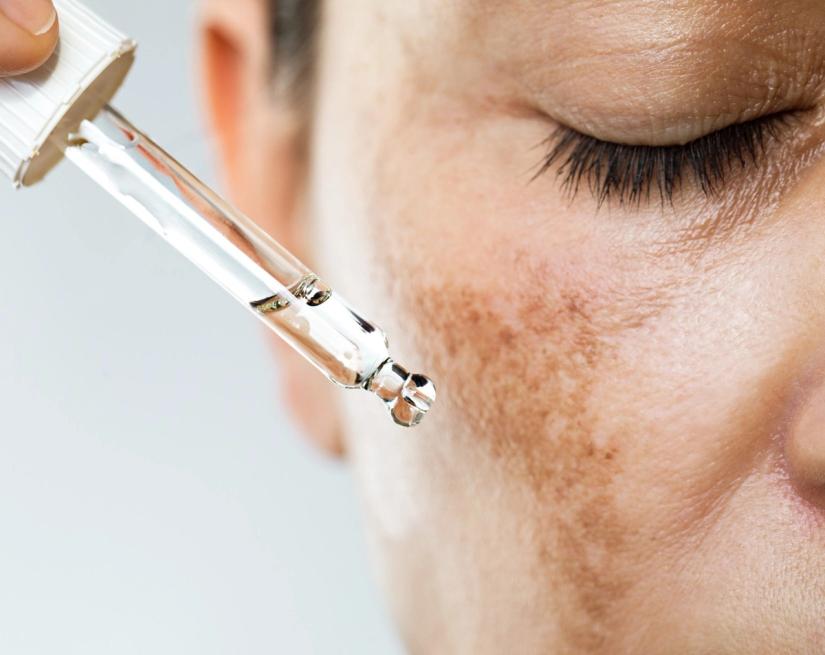skin care
Sunscreen in Skincare Routine: When and How to Apply for Maximum Protection
Eve Mérinville | Corporate RD Excellence & SC RD and Innovation Director
10 min read

The familiar phrase, “Protect your skin from the sun,” is more than just a good piece of advice—it is essential for maintaining healthy, glowing skin. Let’s take a closer look at what, when, how, and why of incorporating sunscreen into our skincare regimen.
Understanding Sunscreen and its Importance
Using sunscreen daily is a must, regardless of whether you are outside or not. It is a powerful shield against the sun's harmful ultraviolet (UV) rays, known to cause long-term skin concerns. Although you may recognize the importance of sunscreen, understanding the deeper implications and knowing when and how to apply it can make all the difference in safeguarding your skin’s health.
What Is Sunscreen?
Sunscreen, also known as sunblock or sun cream, is a topical product that helps protect the skin from the sun's UV radiation. With active ingredients like titanium dioxide, zinc oxide, and avobenzone, sunscreen acts as a protective barrier that absorbs or reflects UV rays, preventing them from penetrating the skin. While sunscreen does help the skin with premature aging, it also plays a critical role in protecting our skin from cancer and other environmental factors.
Why Is Sunscreen Important?
Prolonged exposure to UV rays can lead to sunburn, skin aging, pigmentation concerns, and an increased risk of skin cancer. Broad spectrum options, like SPF 30 or SPF 50, provide varying degrees of protection against UV, UVA, and UVB rays. Whether it is a beach day or a daily commute to work, applying sunscreen helps to maintain healthy, protected skin.
Types of Sunscreen
There are two primary types of sunscreen: chemical sunscreen and physical sunscreen.
| chemical sunscreens | physical sunscreens | |
| Chemical sunscreens work by absorbing UV rays | physical sunscreens create a protective layer on the skin's surface, reflecting UV rays away from the skin. |
When to Apply Sunscreen
Understanding the optimal timing for sunscreen application is key to ensuring that our skin remains protected throughout the day.
Best Time to Apply Sunscreen
The best time to apply sunscreen is approximately 30 minutes before sun exposure. This allows the product to fully absorb into the skin in order to provide maximum protection. An easy way to ensure you are applying daily, before sun exposure, is to incorporate a product with sunscreen in it into your morning skincare routine.
Frequency of Application
To remain protected, reapply sunscreen every two hours, especially if you are spending an extended period outdoors, regardless of the season or cloud cover.
Applying Sunscreen Indoors
While the idea that applying sunscreen when staying indoors may come across as senseless, it is actually just as necessary. You might assume that your skin is shielded, however, UV rays can actually penetrate windows and cause skin damage.
How to Apply Sunscreen for Maximum Protection
While using sunscreen is a fundamental step in protecting your skin from the sun's harmful UV rays, applying it correctly is equally essential to ensure maximum effectiveness.
Preparing the Skin
Before applying sunscreen, cleanse and moisturize your skin to ensure the product adheres properly.
Amount of Sunscreen to Use
As a rule of thumb, most adults need about an ounce or a shot glass worth of sunscreen to cover their entire body adequately.
Application Techniques
It is important to apply sunscreen evenly on all exposed areas of the body, using gentle circular motions to guarantee full coverage.
Reapplication Tips
As you go about your day, reapply your sunscreen every two hours, or after swimming or sweating, as water and friction can reduce its effectiveness.
Sunscreen and Makeup
You don’t have to skip makeup just because you want to protect your skin. Sunscreen can be seamlessly applied under makeup, ensuring you are protected throughout the day.

Choosing the Right Sunscreen for Your Skin
Selecting the right sunscreen for your skin is a crucial step in ensuring optimal sun protection and maintaining your skin's health. However, it is important to understand the differences so you make an informed decision for your specific skin needs.
Skin Type Considerations
First, assess your skin type. Those with oily skin may prefer oil-free or gel-based sunscreens, while those with dry skin may benefit from moisturizing formulas.
Sunscreen for Sensitive Skin
Sensitive skin requires extra care. For those who have skin that easily reacts, opt for a sunscreen labeled as “hypoallergenic” or “fragrance-free.”
Sunscreen for Acne-Prone Skin
If you have acne-prone skin, lean towards non-comedogenic sunscreens. These sunscreens are designed so that they won’t clog pores or cause breakouts.
Sunscreen for Aging Skin
For those with maturing skin, look for sunscreens with added antioxidants and anti-aging ingredients.
Environmental Considerations
Choose reef-safe sunscreens to protect your skin from UV radiation while also protecting the ocean’s delicate ecosystems. These sunscreens avoid toxic chemicals that can be harmful to marine life.
Sunscreen and Its Compatibility with Other Skincare Products
Ensuring the compatibility of sunscreen with your other skincare products is crucial for maintaining the effectiveness of both your skincare routine and sun protection. When incorporating a sunscreen into your skincare routine, consider the following:
Layering Skincare Products
Sunscreen should be the last step in your skincare routine but applied before makeup. Make sure your other products like serums and moisturizers have had time to absorb into the skin before layering on sunscreen. This will ensure the effectiveness of all products.
Sunscreen and Moisturizers
There are two options here: You can use a moisturizer with built-in sunscreen or apply your moisturizer before sunscreen. Applying sunscreen after moisturizer ensures that both products can fully deliver their benefits.
Sunscreen and Serums
For maximum efficacy, allow your serum(s) to absorb fully before applying your sunscreen.
Sunscreen and Exfoliants
If you are using harsh exfoliants on the same day you apply sunscreen, consider applying them in your evening routine rather than morning. This will help prevent any skin sensitivity that may be caused by the exfoliant.
Protecting Your Skin is Loving Your Skin
Every time you go outside, your skin is exposed to harmful UV rays, making it all the more important to incorporate sunscreen into your daily skincare routine. Using sunscreen consistently will protect the skin, reduce the risk of skin cancer, and even mitigate the signs of aging.
Remember, protecting your skin is an act of love for yourself. Explore the Comfort Zone products to create a solid foundation for healthy, radiant skin.




